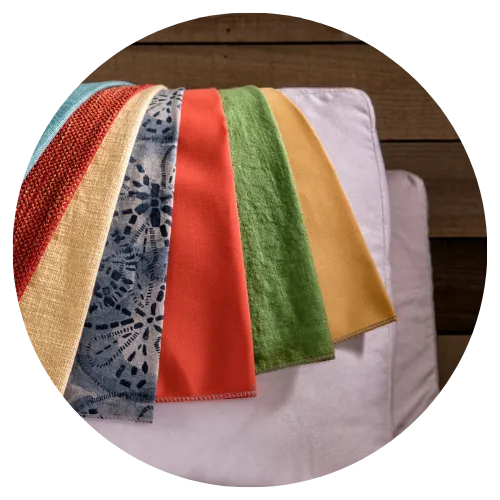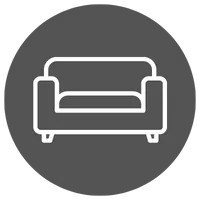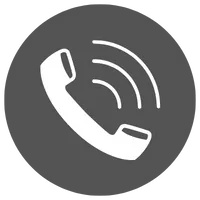Slipcover Cleaning Codes & Descriptions
Our fabrics are carefully selected to give our furniture a casual appeal and unsurpassed softness. We recommend only washing slipcovers once or twice a year. If you wash them too often, you'll wear them out prematurely.
Our "Life Approved" Performance Fabrics resist stains and repel liquids, and resist fading from sunlight.
Our fabrics are pre-washed for added softness and machine washability.
Our Standard fabrics include a variety of soft cotton twills, cotton prints, great linens, plush velvets, and cuddly chenilles. We recommend dry cleaning these fabrics to ensure their long life.

Cleaning Codes:
D:
We recommend dry cleaning these fabrics to ensure their long life.
Please follow the machine washing instructions below.
We recommend only washing slipcovers once or twice a year. If you wash them too often, you'll wear them out prematurely.
Washing Instructions:
- Do not overload your washer
- Close all zippers on seats, backs, and throws to prolong seam life
- Machine wash cold, gentle cycle with mild detergent
- Dry on low heat or air dry until damp. Put back on piece while cover is slightly damp
PF-A:
Spot Cleaning:
- Lightly Brush off any excess dirt.
- Prepare a cleaning solution with a ¼ cup of bleach with warm water.
- Spray fabric with solution and use a sponge or soft bristle brush to clean, making sure that the fabric is completely soaked through.
- Rinse thoroughly with clean water and allow fabric to air dry.
- For tougher stains, increase bleach as needed.
Machine Washing Instructions:
- BE CAREFUL NOT TO OVERLOAD YOUR WASHER.
- CLOSE ALL ZIPPERS ON SEATS, BACKS, AND THROWS TO PROLONG SEAM LIFE.
- MACHINE WASH WARM, GENTLE CYCLE WITH BLEACH
- AIR DRY. ****DO NOT PUT IN DRYER***
- PUT BACK ON PIECE WHILE COVER IS SLIGHTLY DAMP
- DO NOT DRY CLEAN
PF-B:
Spot Cleaning:
The spot cleaning method of stain removal can be used for most light to medium stains.
1. Before spot cleaning, blot up liquids on the surface with a clean, soft towel and brush off any loose dirt.
2. Prepare a cleaning solution of ¼ tsp mild, enzyme detergent, such as Tide®, or Woolite® or Dawn® dishwashing liquid, per 1 cup of lukewarm water.
3. Apply the cleaning solution using a misting spray bottle.
4. Work the solution into the affected area by lightly scrubbing the area with a sponge or soft bristle brush. Make sure to work from the outside of the stain inward so as not to spread the stain and rinse your sponge or brush frequently.
5. Allow cleaning solution to soak into the fabric.
6. Rinse thoroughly to remove all soap residues, as residues will attract dirt. Blot excess moisture with a clean, soft towel or sponge.
7. Allow fabric to air dry.
8. Repeat steps 3-6 as needed.
Machine Washing Instructions:
- BE CAREFUL NOT TO OVERLOAD YOUR WASHER.
- CLOSE ALL ZIPPERS ON SEATS, BACKS, AND THROWS TO PROLONG SEAM LIFE.
- MACHINE WASH COLD, GENTLE CYCLE WITH MILD DETERGENT.
- DRY ON LOW HEAT OR AIR DRY TIL DAMP.
- PUT BACK ON PIECE WHILE COVER IS SLIGHTLY DAMP
- DO NOT USE BLEACH
PF-C:
Linen – The Original Performance Fabric - An already performant natural fiber, second only to hemp in strength and durability.
This collection of pigment dyed colors is treated with a non-toxic, non-bio-persistent chemistry to add repellency to this multi-use linen. It passes a ‘water repellency’ standard with a rating of over 90 on a spray test, is fully washable and retains its properties up to 10 washes at 40 degrees Celsius/ 100 degrees Fahrenheit. (The standard for ‘washable’ is a minimum of 5 washings).
Repellency is re-activated with ironing after washing. Dry cleaning is also recommended.
1. DO NOT USE BLEACH.
2. For spot cleaning, use a mild detergent and forcefully blot the stain continuously, pulling the liquid and stain out of the fabric with a dry, clean paper towel or cloth.
3. Wet as needed and do not rub. Ironing may be needed to reactivate stain repellency.
A high-abrasion rating of 30,000 Martindale makes this quality an exceptional choice for high-traffic areas in residential and contract applications. It is light- and color-fast at a rating of 6/8.
Machine Washing Instructions:
- BE CAREFUL NOT TO OVERLOAD YOUR WASHER.
- CLOSE ALL ZIPPERS ON SEATS, BACKS, AND THROWS TO PROLONG SEAM LIFE.
- MACHINE WASH COLD, GENTLE CYCLE WITH MILD DETERGENT.
- SOMETIMES AN EXTRA RINSE CYCLE IS REQUIRED TO GET ALL THE SOAP OUT
- DRY ON LOW HEAT OR AIR DRY TIL DAMP.
- PUT BACK ON PIECE WHILE COVER IS SLIGHTLY DAMP
- DO NOT USE BLEACH
Why Choose One of Our Life Approved Performance Fabrics?
Stain Resistant
All our life approved fabrics inherently resist stains. Treat stains immediately by blotting the area with a damp clean cloth.
Liquid Repellant
All Life Approved fabrics inherently repel liquids. The spilled liquid will simply bead and puddle up on the surface allowing you to blot with a clean cloth.
UV & Fade Resistant
Some Life Approved fabrics are resistant to the degrading effects of sunlight. This is a great option for rooms that are exposed to high levels of ultraviolet sunlight.
Bleach Cleanable
Some Life Approved fabrics are Bleach Cleanable. Just add bleach to the wash cycle for washing slipcovers.
Odor Resistant
Some Life Approved fabrics (Crypton) are Odor Resistant. The Silver Ion Technology is resistant to bacterial growth thus inhibiting odors.
General Furniture Care
To help extend the life of your slipcover, cushions, and frame you need to take care of your furniture. Here are some "best practice" tips for getting the most out of your Nantuckit Furniture:
Seat cushions and back pillows should be reversed regularly.
Seat cushions should be rotated from side to side.
Seat cushions, back pillows, and throw pillows should be fluffed regularly.
Vacuum with a soft brush attachment to get excess dust and dirt.
Don't treat your furniture like it is a trampoline
What is Fabric Pilling? (Causes / Treatment / Prevention)
Fabric Pilling is the term for loose strands or balls of fiber that form on a piece of fabric. Pilling is a common occurrence among Man-made fabrics and is noticeable on clothing, pillows, rugs, and furniture.
What Causes Fabric Pilling? Pilling is caused when fabric fibers become loose and they move around when we sit or cause friction against the fibers. The friction rubbing up against the fabric causes loose fibers to twist together and form into small balls. Your washing machine also causes friction and therefore this is why you may sometimes see fabric pills on towels, sweaters, and slipcovers. Pilling is completely normal and will go away once the excess loose fibers have been removed. It does not affect the durability of the fabric and the small fabric balls can be removed with a pill shaver.
How to Treat Fabric Pilling
A battery-operated pill shaver is the quickest and cheapest way to treat and remove pills. There are many brands on the market and are easily accessible online or at Big Box retail stores. Pilling may reappear several times before all the loose fibers have shed. When it does, simply shave off again. Your fabric will stop pilling after all the loose fibers have been removed.
Is Fabric Pilling Preventable?
All fabrics will pill to some extent, but some fibers are less likely to pill than others. Smooth, tightly woven fabric are the least likely to pill because the fibers are held together tightly inside the cloth. Fabrics made with more than one fiber type are the most likely to pill. When one fiber is stronger than the other, the weaker fiber becomes loose while the stronger fiber holds the pill to the fabric.
Natural Fabrics vs Man-Made Fabrics
Natural fabrics (cotton, linen, wool, hemp) shed loose fibers easier. Natural fabrics are not as tight, so loose fibers can easily escape from the fabric without pilling. Man-made fabrics (Polyester, Acrylic, Nylon, Rayon) are extremely tight and strong so loose fibers are secured to the fabric. Man-made fabrics are typically built for performance, but they will pill more than natural fabrics.
To sum it up, fabric pilling is not preventable. However, if your furniture develops fabric pills, do not be alarmed. You can easily treat and remove the fabric pills with a pill shaver. Also fabric pilling shouldn’t be your primary concern when picking out upholstery because it happens on all fabrics.
READY TO GET STARTED?
How It Works

Select your fabrics
Review our slipcovered fabrics and select 7 you'd like to see. Click here, submit your swatch request then move on to step 2 (please allow 7 business days to receive your swatches).

Select your furniture
Select the pieces of slipcovered furniture you want including all the custom options that will make your furniture truly one of a kind. Once you've received your swatches, move on to step 3.

Place your order
Email us with a list of the furniture you want or schedule a call so we can help. Once the invoice has been created, we will email it to you. You must approve and pay for the invoice before your order is put into production (please allow 8-12 weeks for construction and delivery).
Nantuckit Furniture Company, a division of SBHILL, Inc | 2005-2024 All Rights Reserved. | Privacy Policy |Terms of Service | Disclaimer | Site Map
